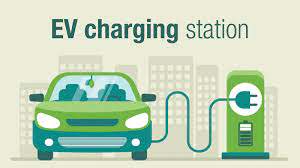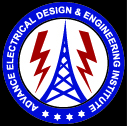Online Electric Vehicle (EV) Charging station Design Training

In World, the automobile industry is one of the key segments driving economic growth; and at the same time,
one of the principal contributors to pollution and making World dependent on overseas oil.
So, with the government’s sights firmly set on making India a nation chiefly running on electric
transportation by 2030 in that
Government of India have undertaken multiple initiatives to promote manufacturing and adoption
of electric vehicles in India.
With support of the Government,
electric vehicles have started penetrating in the Indian Market.
Advance Electrical Design and Enigneering institute (aedei) Developing the skilled engineers by
industrial training with help of skill Engineers availability of adequate Charging
Infrastructure is one of the key requirement for accelerated adoption of electric vehicles in India.
It is proposed to encourage this by laying down an enabling framework..
once demand of electric vehicle increase as well as the
demand for electric vehicle charging points is also increasing and
this has opened up a lucrative new business opportunity for electrical contractors. For Career growth and Job Opportunities in Electric vehicles Charging station Design now Major automotive industry hub of India.
Tata Motors, Bajaj Auto, Kinetic engineering etc. have their automobile manufacturing units.
Many auto-mobile manufacturing units are situated at Nashik and Mumbai, Delhi . Apart from these units,
some small and medium size industrial units such as Gulane Engineering, Martin Frank (Motion Control) Pvt.
Limited and Technovision have already started development of various components for battery operated electric vehicles.
All above companies are looking for skill engineers those can implementing Electric Vehicle charging station skill to develop Electric Vehicles Charging infrastructure in India or rest of the word, to contribution of green fossil AEDEI start Electric Vehicles Charging station Design Training in India.
Electric vehicles Charging station Design training covered selection of A/c Charger, selection of electric motors for specific capacity vehicles, design of controllers,
design of battery chargers with specific applications to electric vehicles, selection of D/c Charger
development of testing facility for testing of electric motors, controllers and battery chargers. We are providing industry-institute interaction and hands on training for Electric vehicle Charging station Design
In Institute provided educational institution with adequate infrastructure.
Ac charger Design |D/c Charger Design |Chassis Design | Suspension and Braking | e-Powertrain | Charging Circuit |
Ergonomics | Electric Safety and Standards | Troubleshooting | Testing overall | Career Counseling. Educational Qualification for detailed Electric Vehicle Charging Station Design Training Training Time Duration TP become experts in detailed Electric Vehicles/ Hybrid Vehicles design & training Course we invest more time to skilled in particular course. As part of their training students undergo at least 1.5 month of experiential learning in an Electric vehicles engineering environment. Chapter 1 -Introduction: Electric Vehicle Chapter - 2. Types of EV Chargers Chapter- 3. Selection and sizing of fast and slow charger (AC & DC) Chapter- 4. Selection and sizing of Common types of connectors and applications Chapter 5 - Public Charging infrastructure / Electrical system design Chapter 6 -EV Charger Integration with Solar Power Plant
AEDEI: Syllabus of EV Charging station Design Training Course
ef. Std. IEC IEC 60068-2 (1,2,14,30),IEC
61683,IEC 60227,IEC 60502 IEC 60947 part I,II, III, IEC 61215

